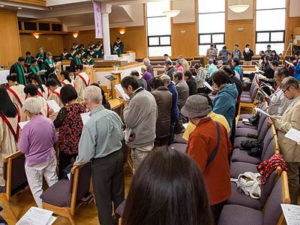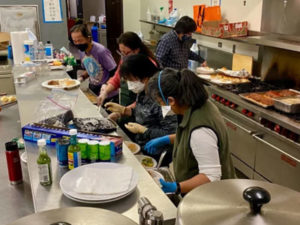“Three Worshipping Communities Linked by the Language of Food”
The Presbyterian Church in Chinatown
San Franciso, CA
By Derek Wu
 I come from a nondenominational church background, so it took me some time to appreciate the routine intricacies of Presbyterian Church in Chinatown’s three-commission system. Presbyterian Church in Chinatown (PCC) is located in the heart of Chinatown, San Francisco. PCC operates as a single session under the Presbyterian denomination with a Cantonese-speaking commission, a Mandarin-speaking commission, and an English-speaking commission. Congregants call these commissions “worshipping communities.” The three-commission system was established in the 1980s, but this church has existed far beyond the 1980s—the community boasts “167 years of service and ministry.” Founded by Rev. Dr. William Speer in 1853 as a “foreign mission” by the Presbyterian denomination, PCC is the first Asian American congregation in North America. As is evident from their website, in dissertations, and in well-preserved historical records, the church bears a storied history of preserving its Asian American and Christian identity through changing history and social contexts. PCC has rescued enslaved Chinese girls, dealt with abusive leaders, and maintained unity despite a schism resulting from power imbalances and practical and theological differences.
I come from a nondenominational church background, so it took me some time to appreciate the routine intricacies of Presbyterian Church in Chinatown’s three-commission system. Presbyterian Church in Chinatown (PCC) is located in the heart of Chinatown, San Francisco. PCC operates as a single session under the Presbyterian denomination with a Cantonese-speaking commission, a Mandarin-speaking commission, and an English-speaking commission. Congregants call these commissions “worshipping communities.” The three-commission system was established in the 1980s, but this church has existed far beyond the 1980s—the community boasts “167 years of service and ministry.” Founded by Rev. Dr. William Speer in 1853 as a “foreign mission” by the Presbyterian denomination, PCC is the first Asian American congregation in North America. As is evident from their website, in dissertations, and in well-preserved historical records, the church bears a storied history of preserving its Asian American and Christian identity through changing history and social contexts. PCC has rescued enslaved Chinese girls, dealt with abusive leaders, and maintained unity despite a schism resulting from power imbalances and practical and theological differences.
Today, around 220 members attend PCC. Many of the members of all three worshipping communities grew up going to the church and have remained at this church their entire lives. Yet there is significant difference in the social context of each community. Pastor Don, the interim pastor of the English-speaking commission, informed me that the Mandarin and the English members have long been commuting to the church, but most of the Cantonese walk to church since Chinatown is still largely a Cantonese-speaking area. The Mandarin and Cantonese communities consist of many elderly folks, so their ministries are primarily focused on the needs of those who are retired. The English community is the largest, and its members are the most geographically spread out. Many members have moved out to the larger Bay Area but commute back into the city in order to worship with those they grew up with and to serve the local Chinatown community. Chinatown, a starting point for immigrants from China, is 22 square blocks and is the most densely populated neighborhood in San Francisco.
I spent most of my time at PCC with those in the English-speaking worshipping community. As I interviewed congregants, it became clear to me that the worshipping communities functioned as discretely as possible. They each appoint their own leadership and maintain their own budget (although there is also a shared account between the three communities.) However, since the church also operates as one session and shares a building, the three communities occasionally meet together to conduct business. I was fortunate to attend two such meetings. The meetings were held digitally for the first time in PCC’s history, a unique consequence of the COVID-19 pandemic. The two meetings were similar. Members—nearly all of whom appeared to be of Asian descent—and elders signed onto the call, and there was occasional small talk. Conversations wove in and out among English, Cantonese, and Mandarin. Pastor Don, a middle-aged white man who spoke no Chinese, carefully moderated the trilingual meeting. Speakers and translators spoke in turn, occasional awkwardness arising from the language barrier— “Wait! Wait! Let’s get that translated!” interrupted Pastor Don at one point.
Yet, the meetings proceeded with relative ease. One meeting was the “quarterly meeting of the Church Session,” meaning that elders and pastors of the three worshiping communities met together to discuss issues that involved the church as a whole, such as the shared refrigerator and the solar panels on the shared building. The other meeting was PCC’s annual congregational meeting. In this meeting, members ratified the terms of call for each of the ministers and approved elected elders and deacons. Attendees digitally cheered for those who were approved. Not a single sentence of disagreement or frustration was voiced at any point in the 4 hours of these two meetings. In fact, these meetings were formalities— “We must meet to meet the terms of our bylaws, but we don’t have a lot of business” announced Pastor Don at one point—and they felt like formalities. In an interview, I expressed to Pastor Don that the meetings felt a little bland. “Well, we’re just there to ratify everybody’s own decision,” he responded.
As I continued to listen to members speak about the relationship between the three worshipping communities, I came to recognize a sort of gravitas to these meetings—it was a miracle that these worshipping communities were working together and sharing the building so peacefully! Pastor Don told me that the three-commission system was initially established as a way to “keep the church unified but to also allow empowerment” amid the chaos that ensued between the three worshipping communities, primarily due to resentment over the dominance of the English worshipping community within the church. Dennis, a longtime member of the English worshipping community, recalled that the “Presbytery facilitated the division of the church into three commissions because it recognized the power imbalances between the three language groups, and the cultural and theological differences between them. The structure was intended to provide a vehicle for managing, rather than resolving, those imbalances and differences.” Theological differences existed between the communities because of “each group’s experience of enculturation into Christian faith.” He elaborated in an email:
The members of the English Commission (primarily American-born persons of Chinese descent) were brought to faith with a broad “social gospel” understanding of the church’s role in the world. Whereas members of both the Cantonese and Mandarin Commissions, are primarily first or second-generation immigrants (whose first contacts with Christian faith were often with missionaries in China). Their experience of the role of the church is much more traditional.
Mike, a longtime attendee of the English worshipping community whose mother was in the Cantonese worshipping community, was present at one of the meetings in the late 1970s that led to the decision to divide the church into three commissions:
I was there at the congregational meeting when we were supposed to federate. There was resentment building . . . you could tell because the English got three pastors. You had one Cantonese pastor and you got one Mandarin pastor under one session. And one group of elders.
There was a point where, because the English had done a point of order of something or another, the Cantonese was then doing like a chant to strike, saying, “No, no, no . . .” The presbyter was trying to call the meeting back into order . . . and they declared this was in disorder. The church was in disorder.
Eventually, some of the Cantonese leadership and membership left to start their own church down the street. And the conflict did not end there. Jenny, a longtime member of the English worshipping community who grew up in the Cantonese community, described a time when the Mandarin and the Cantonese members became frustrated with the exclusively English Sunday school curriculum. Pastor Guo Hao described another internal conflict that happened recently. The Mandarin worshipping community wanted to devote some of PCC’s resources to aiding the COVID-19 response in China. This sparked debate between the worshipping communities. Disagreements extended from the purpose of the church and its obligations to the issue of China’s political position in the world.
I came to realize that the meetings were the manifestation of PCC’s commitment to democracy and the balancing of power amid theological, cultural, and practical differences. But since the system was only meant to manage rather than resolve these differences, they remain to this day. Pastor Guo Hao informed me that the teachings of each worshipping community were insulated from the others, and pastors did not “guest speak” at the other worshipping communities. Later, Pastor Don added that no “mission or evangelism initiatives, or any of the outreach goals,” would be brought up at all-church sessions. This was because the three worshipping communities held irreconcilable theological positions. In recent times, one worshipping community decided to skip a session meeting because they felt theologically uncomfortable with a decision that was made by another worshipping community. The absence signaled to the church at large, “we don’t want to say no, but we can’t say yes, so we’re just not going to show up.”
At the end of the day, “even though we have theological differences, maintain separate finances, and have different ministries,” Pastor Guo Hao confidently asserted, “we share the building.” Ultimately, the three-commission system was not able to resolve differences, but it was able to balance power within the church and clear the space for a “common ground”—the shared building. And this space-clearing is both metaphorical and literal, as members of each worshipping community occasionally help the hired janitorial staff clean the church.
However, some members feel that the system has not yet realized a common sense of mission. As Pastor Don expressed, “[The three-commission system] is 35, 40 years old. It’s not working very well. We’ve become very, very fractured, in my opinion. And whereas once we were meant to be kind of brothers and sisters in Christ working together, but also minding our own field. Now we really operate as three distinct churches that happened to meet in the same building.” Jenny expressed that there was a general sense of apathy and melancholic longing between people of the three worshipping communities:
Not too many people will want to talk about it. But I know it is in their mind that whatever we have right now, it’s just like, “I know you—but I do not know exactly who you are.” That type of feeling.
Jenny continued by describing a rare moment when the church met together recently:
The only time that we get together is World Communion Sunday. The three worshipping communities, we joined together for worship, and then afterwards, it was a luncheon. And that’s the only time we get together. And we have lunch together, fellowship together.
Other members informed me that the church does not take communion together as one entity, but food is almost always the common denominator when they do meet together. And when they do eat together, it is a beautiful expression of unity and God’s presence. At one point in my interview with Jenny, I asked her to describe a time when God did something incredible at PCC:
 Well, despite all this separation from time to time, God has pulled us together in a mysterious way when it comes to big events. The last time the presbytery came to our church for bi-monthly meeting, and they were going to have dinner with us . . . I didn’t think anybody would like to come. But God has his plan. He pulled us together, and we have the most beautiful meeting and fellowship that I ever seen. The Mandarin—because most of the parents or grandparents have restaurants—they know how to do the cooking. Then, the English is doing the labor work. Setting up the table, and then moving all those furniture around. And then the Cantonese and the English will do all the decoration, put the tablecloth and other stuff. So, I find out Reverend Hammond, it was his first time to have something like this. He was so worried. “Can you guys pull it through? It doesn’t look right at all.” When he came back, he was so surprised. Everything was not 100% perfect. But 99% perfect. But we’re happy about it. And I believe God up there has done something, that we will dedicate ourselves for this particular event.
Well, despite all this separation from time to time, God has pulled us together in a mysterious way when it comes to big events. The last time the presbytery came to our church for bi-monthly meeting, and they were going to have dinner with us . . . I didn’t think anybody would like to come. But God has his plan. He pulled us together, and we have the most beautiful meeting and fellowship that I ever seen. The Mandarin—because most of the parents or grandparents have restaurants—they know how to do the cooking. Then, the English is doing the labor work. Setting up the table, and then moving all those furniture around. And then the Cantonese and the English will do all the decoration, put the tablecloth and other stuff. So, I find out Reverend Hammond, it was his first time to have something like this. He was so worried. “Can you guys pull it through? It doesn’t look right at all.” When he came back, he was so surprised. Everything was not 100% perfect. But 99% perfect. But we’re happy about it. And I believe God up there has done something, that we will dedicate ourselves for this particular event.
Another congregant explained why it was that food was usually present in all-church meetings—for those who cannot speak to each other due to language barriers, food was the safe, immediate form of common ground:
In the old days, we used to have pie contests from all three different congregations…The food acts as an icebreaker and something that’s safe—to talk, to eat, share recipes, whatever. And then you can go ahead and talk deeper if the situation arises, but food is important.
Food is intimately woven into many of the practices of each of the three worshipping communities. In metaphorical terms, food is a language spoken by all three communities. For the Mandarin community, providing meals was the primary way Pastor Guo Hao was able to help his members feel the “warmth and the presence” of the church during the social distancing restrictions of the COVID-19 pandemic. He and his wife cooked and packaged meals to distribute to the community, doing all of the work themselves out of caution for safety. A member who had worked with the English youth group shared about the centrality of “tea-time” to their fellowship—snacks would be set out and sometimes questions would be posed to facilitate conversation. She also shared about the “Christmas Cookie Project,” a Christmastime tradition that involved kids delivering bags of cookies to those who had a difficult year. Various groups within the English community serve meals to those affected by homelessness throughout the year: “they really wanted to share food, and hospitality, and meet people where they’re at—give them some respect and sit and listen to what they had to say.”
During a focus group interview, a member of the English community told me that after he got into a serious accident, members of the church cared for him and his wife after his return home from the hospital by organizing food deliveries to their home. His wife added that while he was still in the hospital, church members gave her daily rides to the hospital for visits. As she described this, another member delightfully chirped, “and whoever gave you a ride, they always either took you out or provided dinner.” Smiles and laughter ensued as members shared a moment of mutual acknowledgment—food was central to the care they showed as a community.
At Cameron House—a distinct but integrally related ministry to the history and life of PCC—intergenerational and linguistic barriers are torn down as some of the English, Cantonese, and Mandarin grandparents, parents, and children come together to help make the pot stickers, gather for “summer dinners,” and participate in a program called “Kitchen Medicine”—where leaders try to teach people in the community how to eat healthy and kids how to cook.
PCC also has its own food pantry. Congregants describe PCC’s food pantry as central to the life of the church. The food pantry is the one place where the three worshipping communities can come together and share a common mission. PCC receives pallets of food from the San Francisco and Marin County food banks. Members from the Mandarin, Cantonese, and English communities then come together to help unpack food into smaller bags and distribute it to seniors in the Chinatown area. Denise, an English member responsible for the management of the food pantry, shared details with me. The food pantry started around five years ago. It was the Cantonese worshipping community who took the lead effort, and the English worshipping community supported them by having volunteers provide the administrative help required to work with the city of San Francisco. In this way, the English members helped the Cantonese members deal with the language barrier. The food pantry began with around 10 Cantonese volunteers every single week:
They came every day. And they were in their seventies, eighties, nineties. Mrs. Lin, who just passed away, was like 96 or something. It was amazing. And the Mandarin folks—they were busy, and they didn’t have a pastor. They were stretched pretty thin, but they did start volunteering once a month. So, we really did have a joint project there.
Pastor Don told me that the church was able to adapt the food pantry to the COVID-19 restrictions with amazing efficiency. “They retooled the way we did everything to make sure that it was safe for the COVID-19 environment . . . San Francisco did a shutdown order before anyone else did in the United States. We shut down on St. Patrick’s Day, March 17, [and] we were the first major metropolitan area to do that. And this church did not miss any of our regular service opportunities. And they did it on their own.”
Denise detailed the intricacies of adapting the food pantry to the pandemic. An elderly Cantonese member was politely asked to stay home for her own safety—she begrudgingly agreed, along with other older members. Thus, the face of the workforce changed—younger members started coming to help out. Things had to be pre-packaged. People had to learn how to sanitize. The entire format of distribution changed:
. . . and so, the way we interacted with people changed. We tried to really keep the hospitality—the kind of outreach that we’re doing—the welcoming. We had to try and keep that going. We started assigning people to be outside at the gate—along the path of travel—to stay six feet apart, but also to be greeting people and to be joking around and doing the things that we used to do on the inside.
To conclude, despite cultural and linguistic barriers, and despite theological and practical conflict, the members of PCC successfully coexist. As I understand it, the shared building is a physical representation of a common ground amid difference. The building thus functions as an image of the ideals of democracy and unity that inspired the church’s three-commission system in the first place. And when PCC members meet together to talk about refrigerators and solar panels, they continue to maintain and “renovate,” so to speak, this shared image of a common ground between the three communities. For the purposes of the Thriving Congregations Initiative, we might call this “ecclesial imagination.” The church building maintains an image within the minds of the congregants. This is an image of the end goal of PCC’s three-commission system—a community of mutual empowerment and unity amid difference.
But some members acknowledge that the church remains fractured. As Jenny described, there is a sort of melancholic feeling that exists in the church’s consciousness—it’s the feeling of, “I know you—but I do not know exactly who you are.” I diagnose this melancholic feeling to be a disconnect between what the church strives to be—a church of mutual empowerment and unity amid difference—and its current state of affairs—three distinct churches that stay out of each other’s lane. However, some members have found that food can bring about the sort of community that the building and three-commission system could not. The building and three-commission system brought the communities together, but did not necessarily produce the tolerance, respect, and hospitable care that are essential to a thriving community of mutual empowerment and unity. But food can produce and express these things. At PCC, food is a tool that congregants use to meet the physical, emotional, and spiritual needs of those in the church and in the Chinatown community. Further, the provision of food is often the expression of a hospitable and welcome space in the shared building. Perhaps it is due to the language barriers between worshipping communities that PCC is required to speak the language of food. Though it is difficult to listen to each other’s stories without the burden of a translator, the language of food enables members to share recipes and so learn from one another. Also, food is a language that remains consistent amid changing social contexts, such as when church meetings receded into the digital world and COVID-19 restrictions threatened the food pantry.
Even though the three worshipping communities cannot yet clear enough ground to take Communion together, they have been able to clear enough ground to share a meal. And PCC’s collective, ecclesial dedication to democracy and unity is most evident when the Mandarin members cook while the English and Cantonese members clear space for tables so that they all may eventually enjoy chaotic fellowship over a delicious meal. And amid the cacophony that rises from dinner at a trilingual fellowship hall, the virtue of tolerance—required for democracy and unity—is feeding and nurturing the ecclesial imagination of this church. To illustrate, I end this portrait with what Mike said when I asked him, “What are some of the values that held the church together that you would like to pass on to younger generations?”:
Tolerance. A huge tolerance for differences. It’s almost like the USA—you got a family that may be . . . Trump-supporter[s] and someone else [who] may be much more progressive. . . But how do you stay together as Christian brothers and sisters?
Sometimes you realize that in some of these things, it’s best just to leave things to where you have common ground. But you have to have a tolerance for each other, and tolerance for viewpoints and [acceptance] that there are differences, both theologically and even maybe culturally. There are things you have in common, but there are things that you have to understand [are] differences in certain things you value, how you see things. . . You have to realize—people have different life stories. They come from different places.


